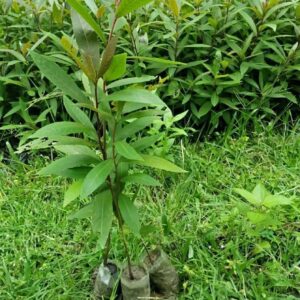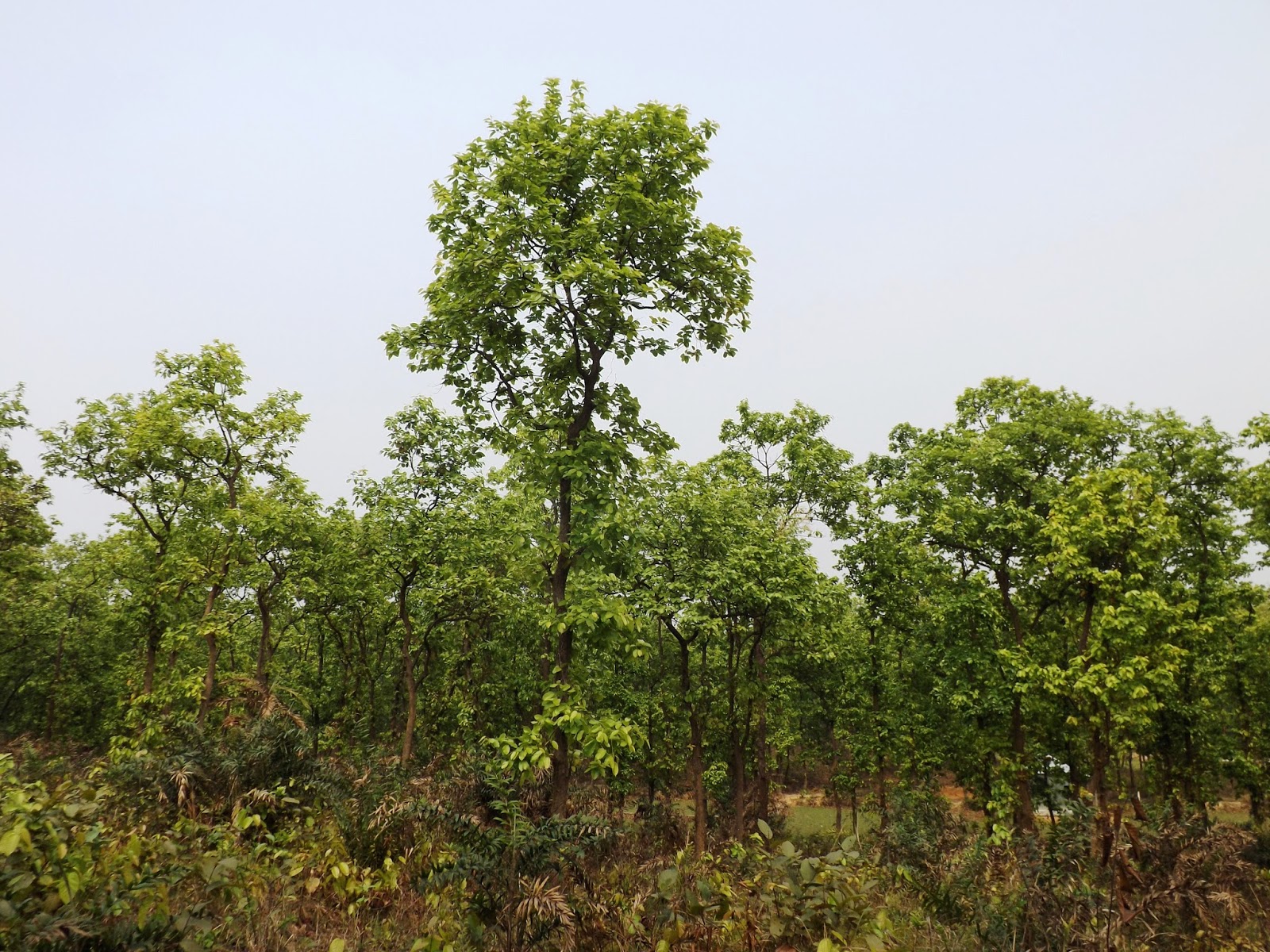Sal (Shorea robusta)
Original price was: ₹40.00.₹20.00Current price is: ₹20.00.
OVERVIEW
Sal (Shorea robusta) – Detailed Information
Local Indian Name: Hindi: साल (Sal), Bengali: শাল গাছ (Shal Gachh), Assamese: শাল গছ (Sal Gos), Odia: ସାଲ ଗଛ (Sal Gachha), Marathi: साल (Sal), Kannada: ಜಾಲಿ ಮರ (Jali Mara), Telugu: జాలి చెట్టు (Jali Chettu)
Scientific Name: Shorea robusta
Family: Dipterocarpaceae
Category: Hardwood Timber Tree, Subcategory: Deciduous to Semi-evergreen Tree
Native Region:
-
Indigenous to: India, Nepal, Bhutan, and Bangladesh
-
Grown in: Central and Eastern India (Jharkhand, Chhattisgarh, Odisha, West Bengal, Madhya Pradesh, Assam, and Uttar Pradesh)
Introduction:
Sal (Shorea robusta) is one of the most important timber trees of India, known for its strong and durable hardwood. It dominates the tropical moist and dry forests of India and plays a significant ecological and economic role. The Sal tree is sacred in Hindu and Buddhist traditions and is often planted near temples. It is widely used for construction, furniture, medicine, and resin production.
Importance & Benefits:
-
High-Quality Timber: Used in railway sleepers, furniture, and construction.
-
Medicinal Properties: Leaves, bark, and resin are used in Ayurvedic treatments.
-
Ecological Role: Forms dense forests, providing a habitat for wildlife.
-
Drought and Fire-Resistant: Thrives in semi-arid conditions.
-
Economic Value: A major source of income for forest-dependent communities.
-
Religious and Cultural Significance: Considered sacred in Hinduism and Buddhism.
Description and Cultivation:
-
Height: Can grow up to 30–40 meters.
-
Trunk: Straight, cylindrical, and deeply grooved.
-
Leaves: Glossy green, oval-shaped with pointed tips.
-
Flowers: Small, yellowish-white, and fragrant, blooming in summer.
-
Fruits: Brownish, winged seeds, dispersed by wind.
Varieties and Cultivars:
There are no distinct cultivars, but Sal trees can be categorized based on their forest type:
-
Moist Sal Forests: Found in Assam, West Bengal, and Odisha.
-
Dry Sal Forests: Found in Madhya Pradesh, Chhattisgarh, and Jharkhand.
Location and Light:
-
Requires full sunlight for optimal growth.
-
Grows best in tropical and subtropical climates.
-
Found at altitudes up to 1500 meters above sea level.
Soil Preparation:
-
Prefers deep, well-drained, sandy loam soil.
-
Soil pH: 5.5 to 7.5 (slightly acidic to neutral).
-
Avoid waterlogged and highly alkaline soils.
-
Organic manure can be mixed with soil before planting.
Planting:
-
Best Season: Monsoon season (June to September).
-
Spacing: 5 x 5 meters (approximately 400 trees per hectare).
-
Pit Size: 50 cm x 50 cm x 50 cm, filled with soil and compost.
Watering:
-
Requires regular watering during the first 2–3 years.
-
After establishment, it becomes drought-tolerant.
-
Avoid excessive watering to prevent root rot.
Pruning:
-
Minimal pruning is required.
-
Remove dead or diseased branches.
Pest and Disease Management:
-
Common Pests:
-
Sal Heartwood Borer (Hoplocerambyx spinicornis) – Controlled by regular monitoring.
-
Sal Bark Borer (Indarbela quadrinotata) – Managed using insecticides.
-
-
Common Diseases:
-
Leaf Blight: Can be treated with fungicides.
-
Root Rot: Avoid excessive soil moisture; apply organic fungicides.
-
-
Preventive Measures:
-
Keep plantations weed-free.
-
Apply organic fertilizers for better resistance.
-
Environmental Conditions:
-
Climate: Warm, humid, or semi-dry conditions.
-
Temperature: 22°C to 38°C is ideal.
-
Rainfall: 1000–2500 mm annually.
-
Humidity: Prefers moderate to high humidity.
Propagation:
-
Seeds: The primary method of propagation.
-
Nursery Raising: Seeds are sown in polybags before transplantation.
-
Vegetative Propagation: Root cuttings and tissue culture are used for better growth.
Uses:
Timber Uses:
-
Heavy-duty construction (bridges, railway sleepers, beams).
-
Furniture, doors, and window frames.
-
Plywood and veneer manufacturing.
Medicinal Uses:
-
Bark: Used for treating diarrhea, dysentery, and skin diseases.
-
Leaves: Used in traditional medicine and as food wrappers.
-
Resin (Sal Dammar): Used in ayurvedic ointments and incense.
Environmental Uses:
-
Soil conservation and afforestation projects.
-
Wildlife habitat creation.
Monetary Benefits:
-
Sal Timber Price: ₹3,000–₹7,000 per cubic foot (depends on quality).
-
Economic Life: Harvesting begins after 30–40 years.
-
Annual ROI: Around 12–20% per year in managed plantations.
-
Income from Leaves: Used in making Sal leaf plates, generating extra income for rural communities.
-
Resin Extraction: Sal dammar is sold for pharmaceutical and industrial uses.
References:
-
Indian Council of Forestry Research and Education (ICFRE)
-
Forest Research Institute (FRI), Dehradun
-
National Afforestation & Eco-Development Board (NAEB)
-
Food and Agriculture Organization (FAO) Reports
-
Central Forest Research Institute (CFRI)
RELATED PRODUCTS
REVIEWS

 Arjun (Terminalia Arjuna)
Arjun (Terminalia Arjuna) 


Reviews
There are no reviews yet.